Ironwood Forest National Monument’s Ragged Top
One Comment
Part 4 of 5: 1 | 2 | 3 | 4 | 5
Although a primary helper of biological diversity, the desert ironwood tree for which Ironwood Forest National Monument was named is hardly a visually impressive feature. On the other hand, independently from its remarkable biological diversity, you cannot miss the prominent 3,907-foot Ragged Top, with its jagged shape rising high above the surrounding flats and slopes. In this post, I discuss photographing the crown jewell of the monument from various viewpoints using contrasting pairs of images, all photographed within a hundred yards from the road.
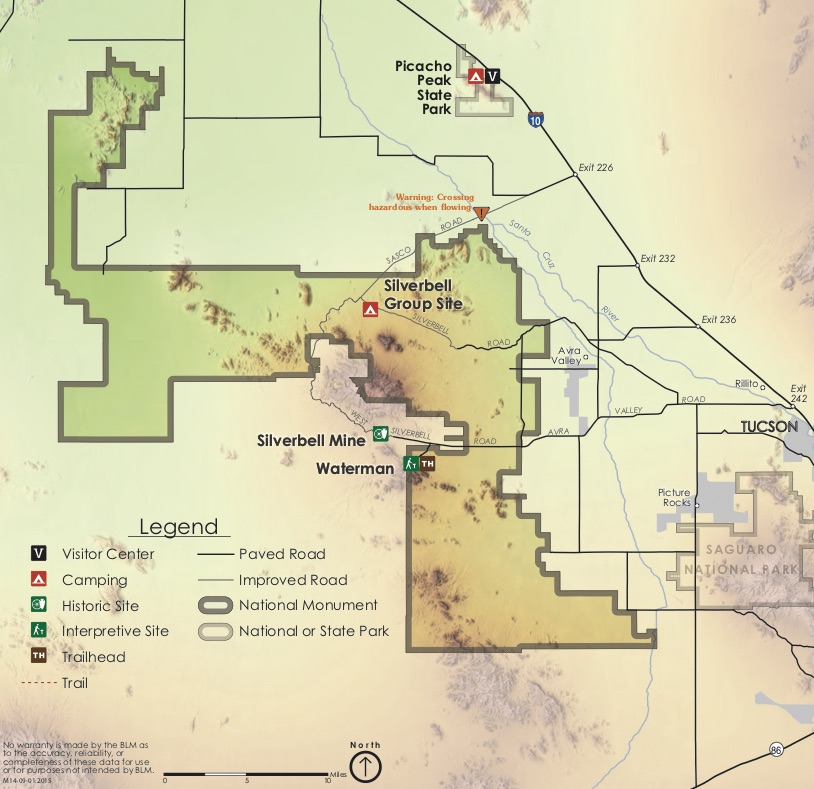
The main artery in Ironwood Forest National Monument is an unpaved loop around the main mountains. Silverbell Road, the south branch, is pretty rough and winds mostly outside of the monument’s boundaries, with the views towards the monument at times marred by a mining operation on the south side of Silver Bell Peak. The more interesting part is the north branch, easily passable with a regular car, which offers varied roadside views of Ragged Top. After the road makes a curve towards the north, you get your first views of Ragged Top, straight to the east. For the next mile, the mountain presents a nice triangular profile. When using even light to photograph with a wide-angle lens (30mm) to also include the wildflowers on the desert floor, the mountain looked distant. It was easy enough to frame it tightly with a short telephoto lens (115mm) in stronger light. Distance is not really a factor when you can switch lenses. Some equate landscape photography with wide-angle lenses, but longer lenses are a useful tool to keep in mind.
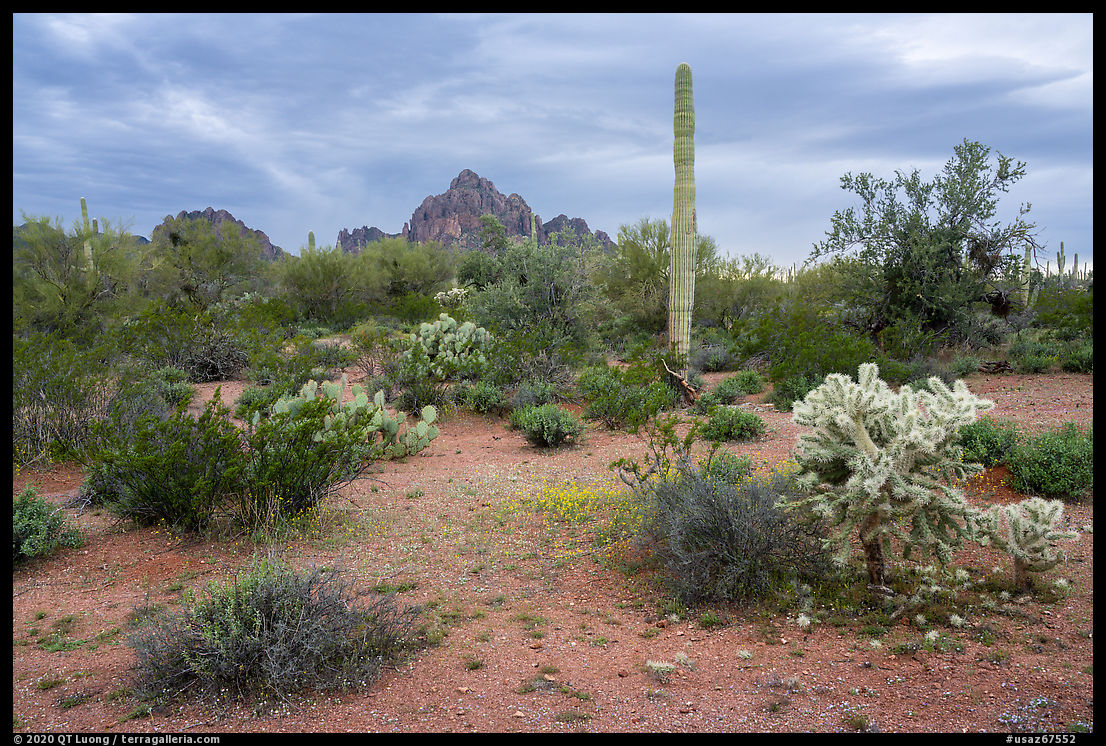
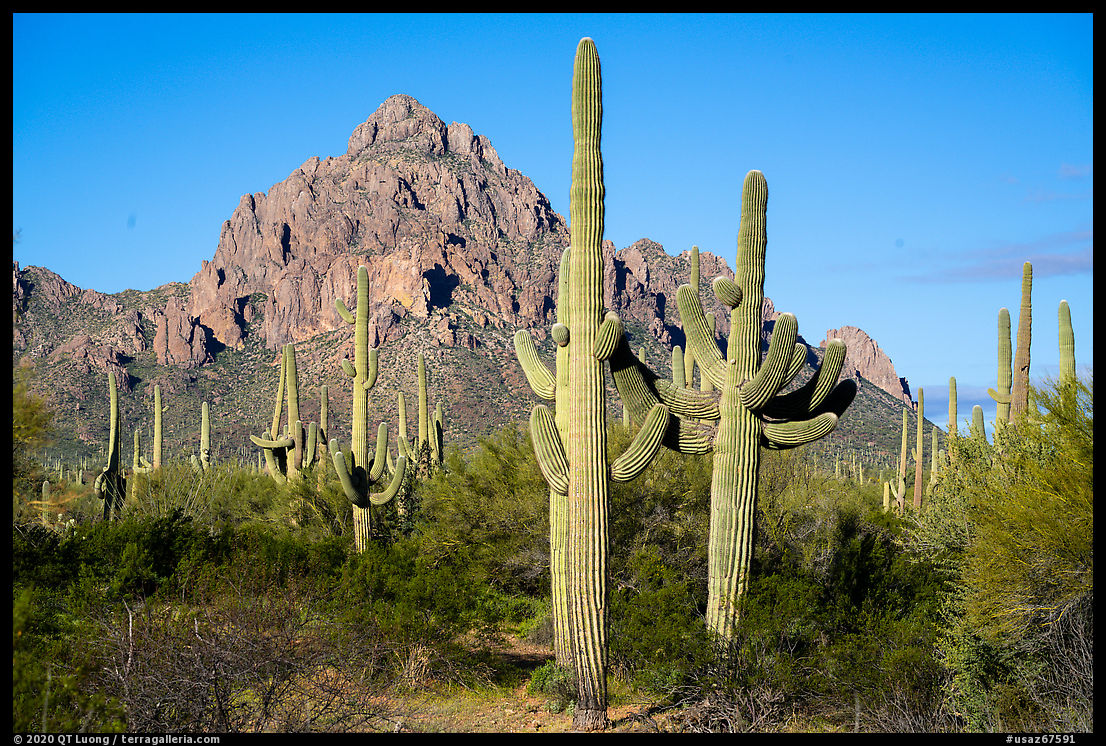
About a mile from the T-junction with Sasco Road, you’ll find the Silverbell Group Site, which is the most developed camping area in the monument. Which isn’t saying much, since all the facilities I saw were a row of portable toilets. They would be removed during the night, leaving me puzzled for a moment at dawn, as I stumbled out half-asleep from my car. The camping area is surrounded by magnificent saguaro cacti. Before moonrise, I captured the stary sky and used a camping lantern to illuminate the saguaro cacti. To include a vast area of the night sky I used a super-angle lens (16mm). This made Ragged Top look very small, but its ragged profile was enough to add a focal point to the horizon. I was ready to go to bed, but hanged out a bit waiting for the full moon to rise. After it did, only few stars remained visible, but because of the strong illumination it provided for the landscape, sky and land came naturally into balance. Treating this as a landscape photograph, to keep a more natural perspective, and avoid the wild convergence of the cactus, I switched to a less extreme wide-angle lens with shift capabilities (24mm). The mood had changed dramatically, and I had adjusted the composition accordingly.
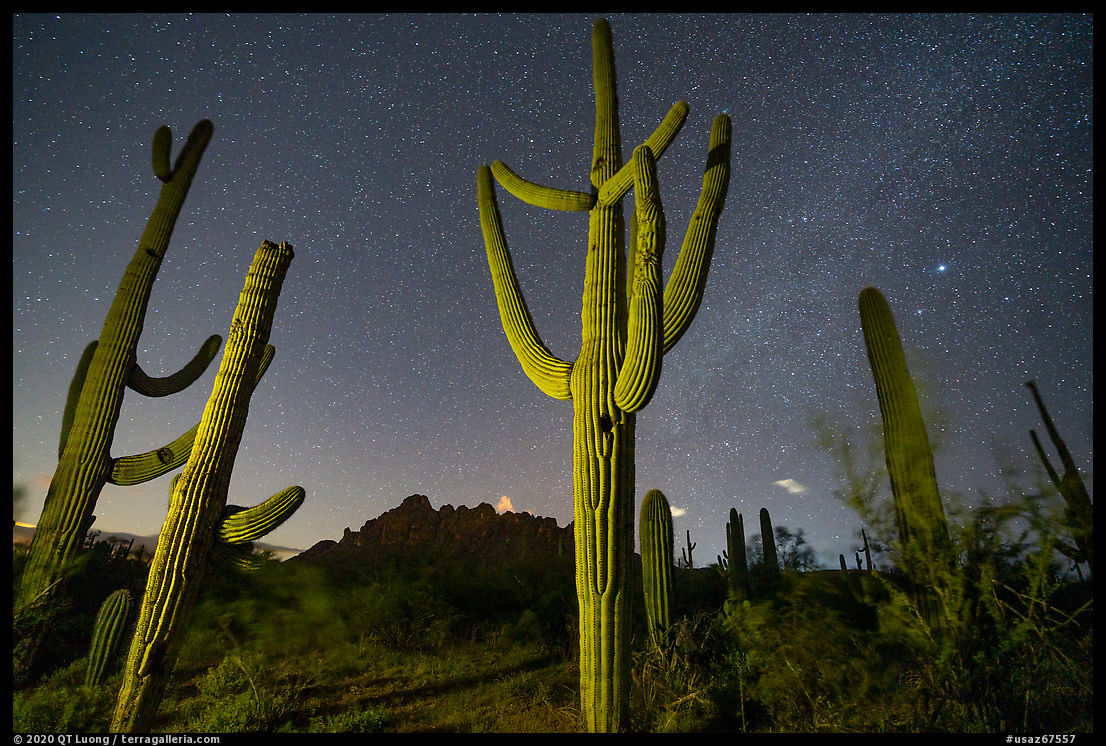
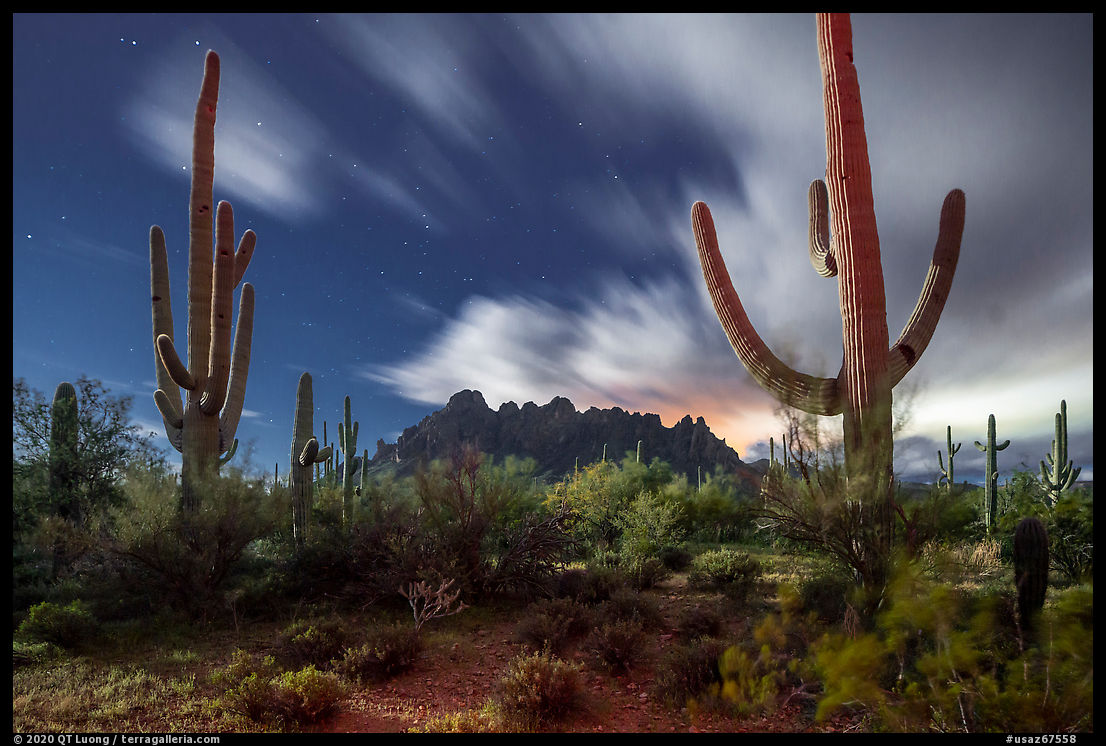
About midway between the two previous locations, near a cattle guard, Silverbell Road comes to its closest point to Ragged Top, which from there is at a south-south-west orientation and looks more like a rock wall. The bajada (broad alluvial slope) at the north base of Ragged Top is one of the most densely vegetated upland desert areas in Arizona, and I to illustrate that, I tried to find a viewpoint to balance the need for a clear view of the mountain with a rich foreground of vegetation. Going from a moderate wide-angle lens (35mm) to a normal lens (60mm) helped emphasize the height of the mountain better. The later required stepping back, and it was not easy to find a spot with no tall shrubs obscure the plants in the foreground. I eventually photographed from across the road to take advantage of the clearing it offered. In the early morning, large parts of the mountain were in the shade, but by mid-morning, the higher sun lights the face better, and clouds formed. The earlier time is not necessarily the best.
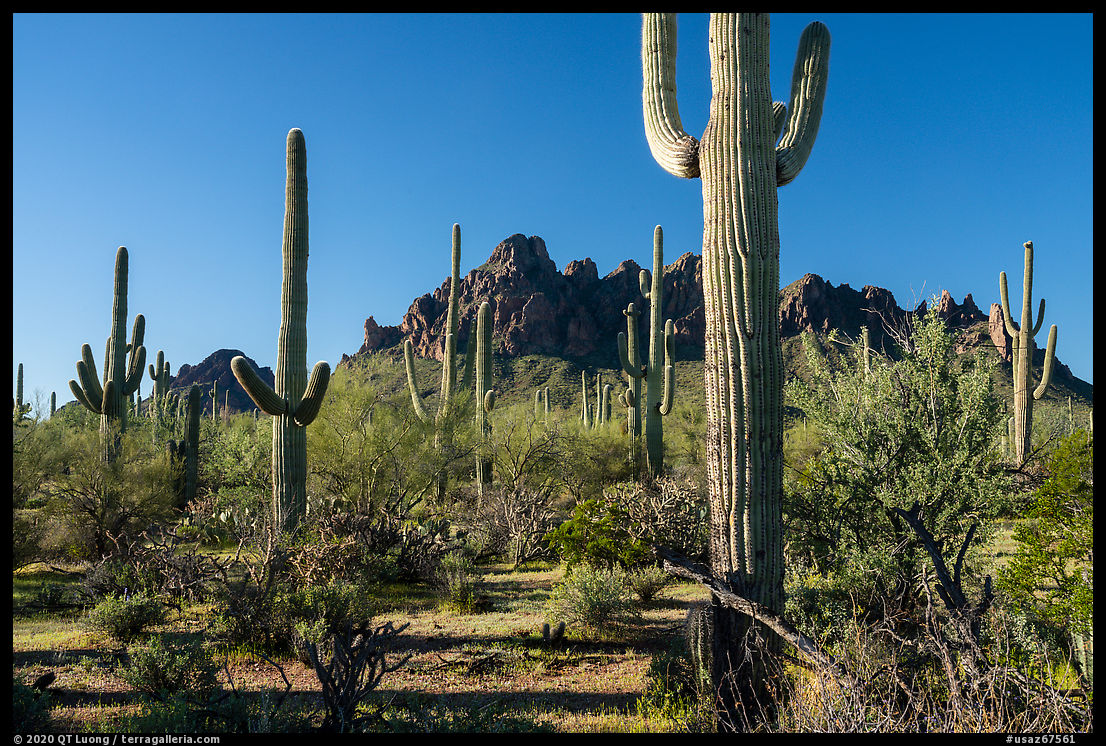
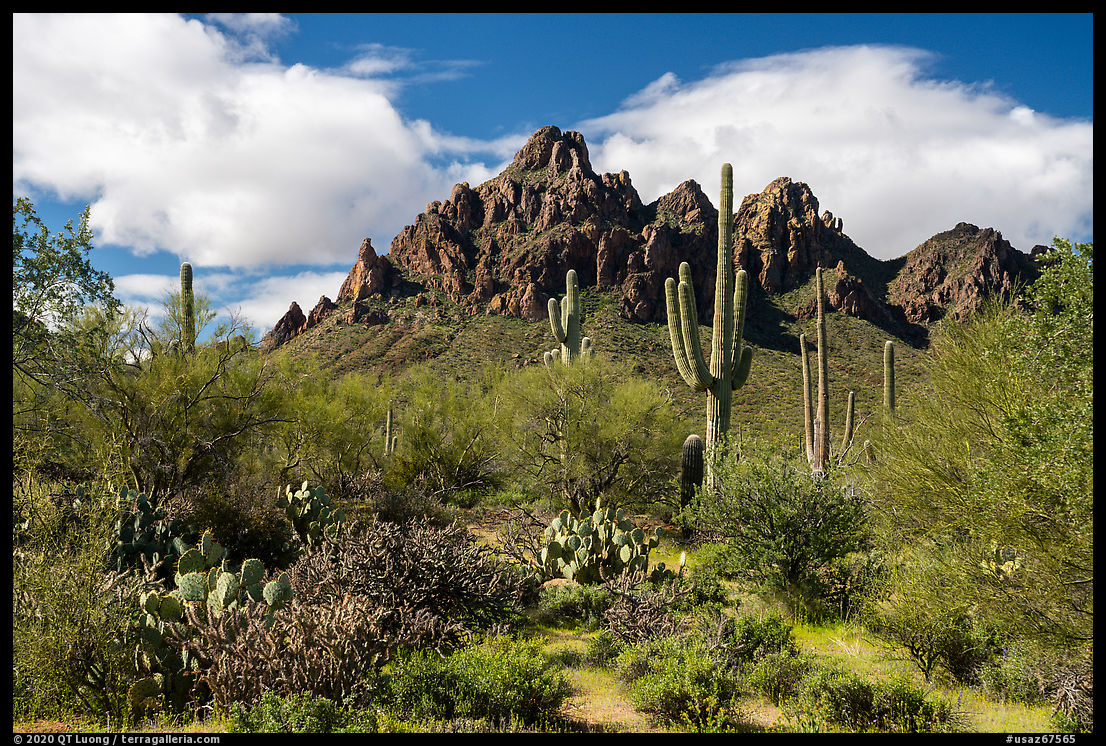
From near that point, a secondary, one-lane road heads up the slope towards the mountain, with a few pullouts suitable for camping near the end. Like many mountains within the Sonoran Desert, Ragged Top harbors considerably more biodiversity than the desert floor. Its volcanic soil hosts more than 400 species, more than two-thirds of the total number of species growing in the monument. I had read that the BLM discourages climbing Ragged Top from January 1 through April 30 during the Bighorn Sheep lambing season, but I was hoping to at least circumnavigate Walcott Peak (adjacent to Ragged Top). However, I was disappointed to see signs and fences discouraging any hiking beyond the road and abided the voluntary restriction. From there, due to the proximity, Ragged Mountain looked foreshortened rather than towering as it does from the main road. However, it was close enough that I could frame it with a super-wide angle lens (20mm) without it appearing too small, and this allowed me to get close to brittlebush flowers to make them a prominent foreground. By waiting for passing clouds to project shadows on the land, I was able to differentiate elements of the picture from each other. With the flowers in slightly dimmer and softer light, the mountain shone more brightly. Even in midday, there are changes in light worth paying attention to.
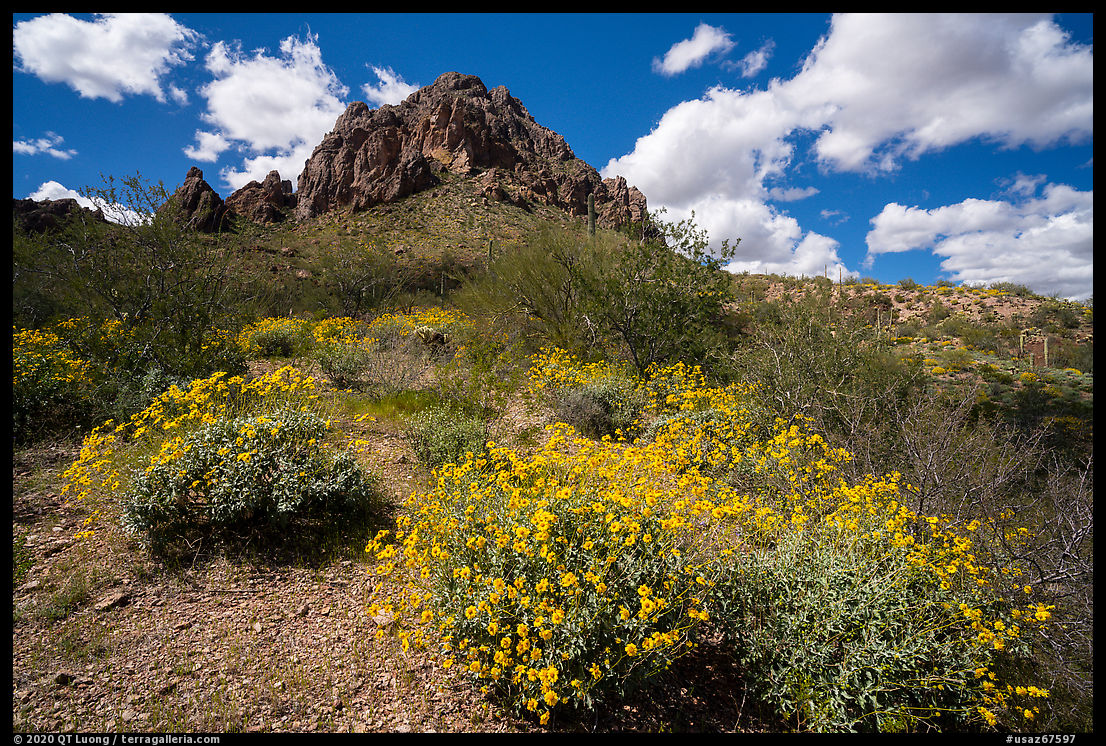
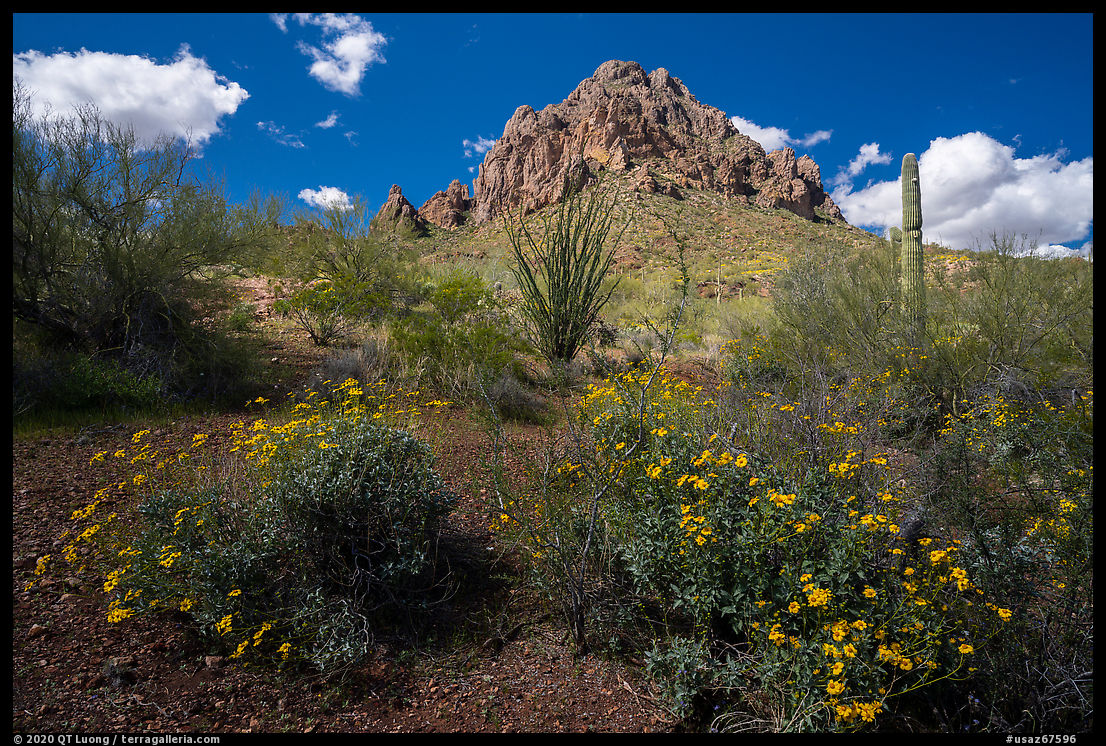
Having seen how more towering Ragged Top appeared when photographed from a further distance with a telephoto lens, I was intrigued when Jack Dykinga told me that his favorite viewpoints were on a road even further than the Silverbell Road. That road is Sasco Road, and I hadn’t thought of it before because it lies mostly outside the monument. To access it from I-10, you must ford the Santa Cruz River, which may require a high-clearance vehicle, but you could access with a regular vehicle from Silverbell Road, especially since the part of the road with the best views of Ragged Top are the last (westmost) three miles. I explored those three miles in the afternoon, marking half a dozen promising locations with my GPS to return to with better light. It turned out that one of them was a favorite of Jack. I didn’t remember the details of his photo, but out of many thousands of saguaro cacti I happened on the same ones as he. Working with telephotos (around 130mm), the challenge was to balance the cactus in the foreground with the mountains in the background using just the right amount of overlap. Unfortunately, the sky was more cloudy than I would have liked – forcing me to include more ground and less sky in the composition – and stayed that way. However, right at sunset, a bit of light came in through an opening in the clouds to illuminate the mountain crest for a few minutes so I was glad I didn’t give up. Only first attempt…
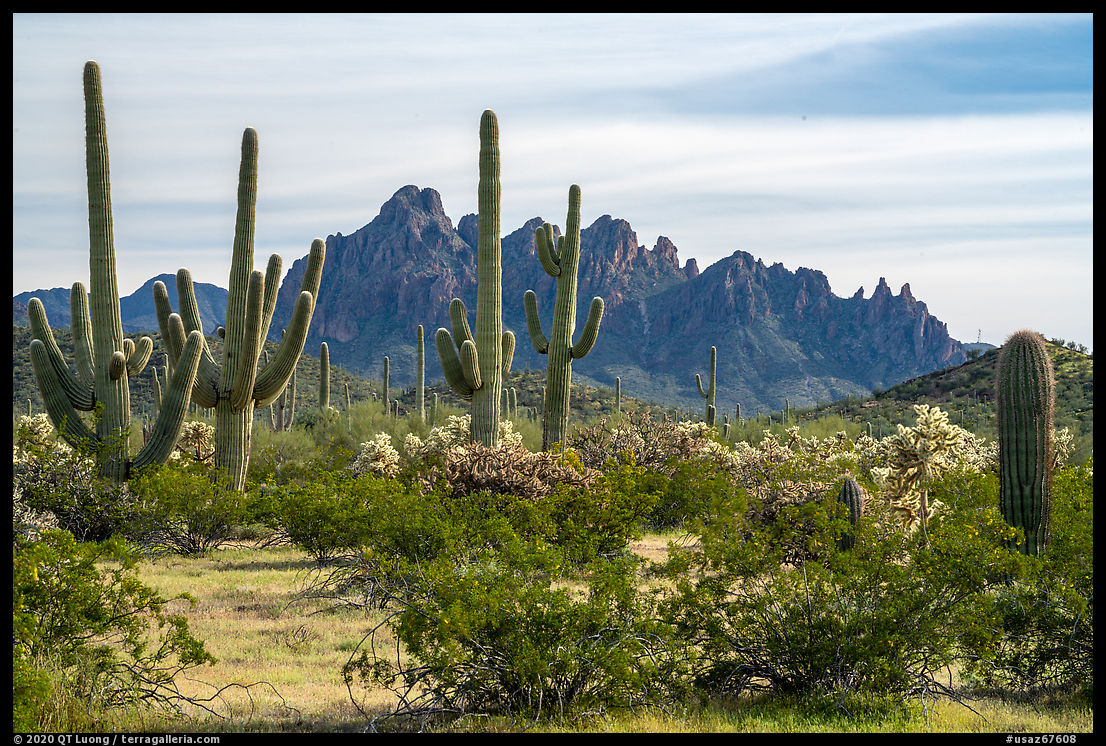
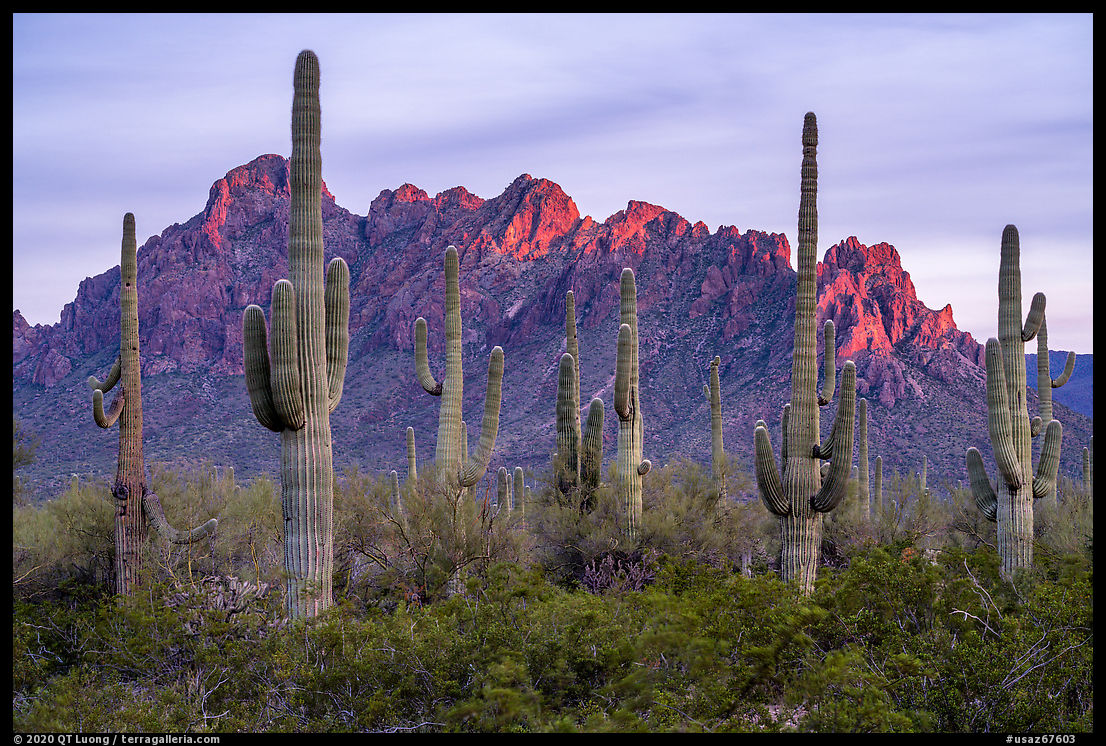
More photos of Ironwood Forest National Monument
Part 4 of 5: 1 | 2 | 3 | 4 | 5


QT
Excellent work. Many love desert. A seminal book for me was Desert Solitaire by Edward Abbey, 1968.
HCMC is remembered. I was never in Vietnam, but many I knew were. I can still see the video in my head, of the last helicopter.
Thank you